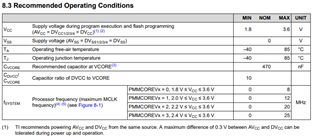Other Parts Discussed in Thread: MSP-GANG, MSP-FET
Hi Team,
I am using MSP430F5438AMPZREP in my design. The IC supports 2 clock crystal.Please let me know how many clock crystal should be connected to the IC.
Also please share the reference schematics for the same.






